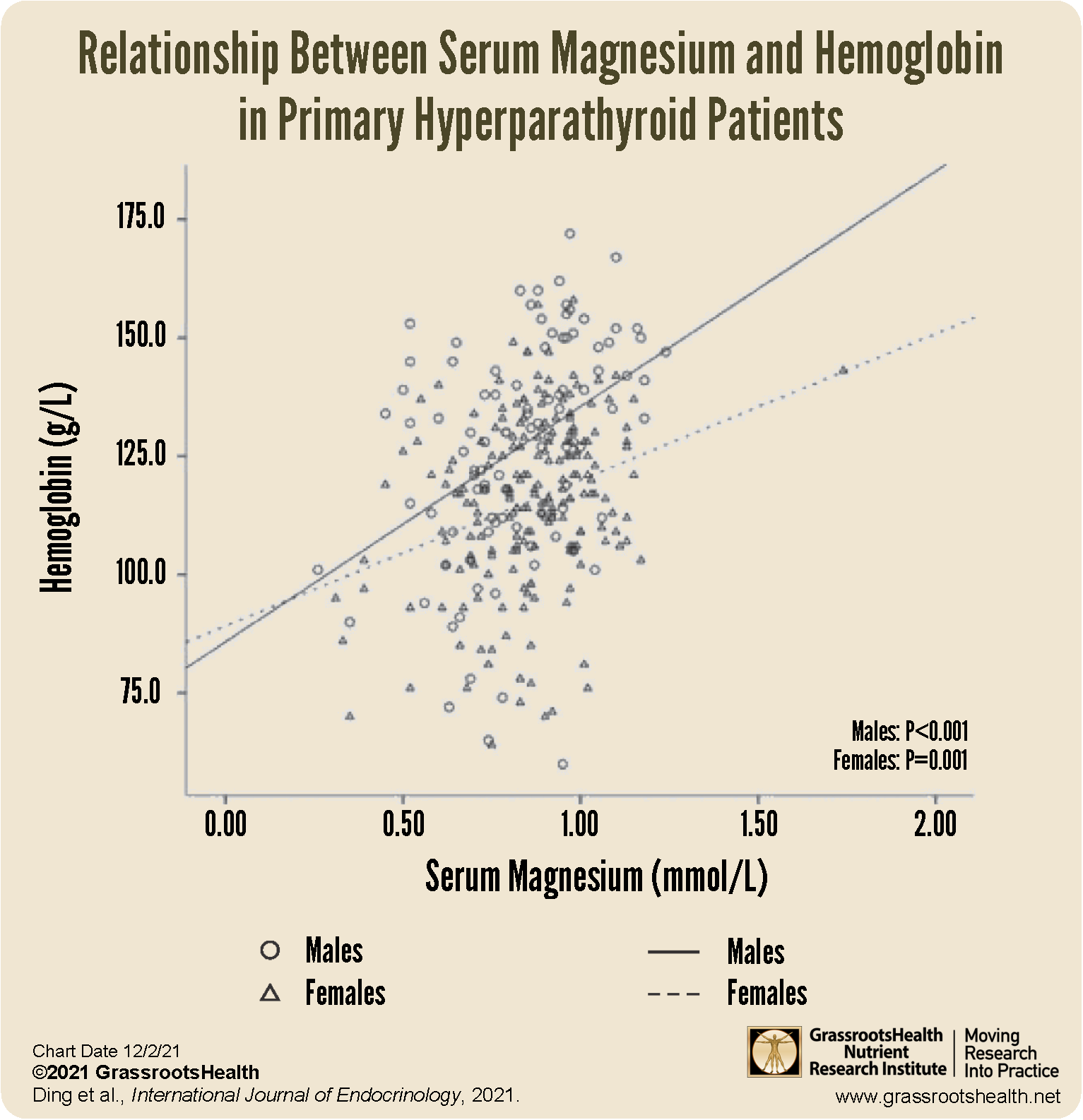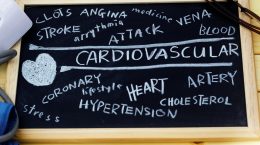Published on December 6, 2021
Studies indicate that having higher levels of vitamin D and getting more magnesium may increase hemoglobin levels and decrease the risk of anemia
Key Points
- Anemia (low levels of hemoglobin in the blood) affects more than 30% of the total population, including an estimated 3 million Americans, and can present with symptoms such as fatigue, shortness of breath, lightheadedness, dizziness, or a fast heartbeat
- The most common cause is low levels of iron in the body; other types of anemia can be caused by low levels of vitamin B12, folic acid or folate, or can be a result of genetic conditions or certain diseases such as thyroid disease and kidney disease
- Vitamin D and magnesium levels in the blood have been shown to be positively associated with hemoglobin levels in the blood, indicating that increasing levels of both may help reduce the risk of anemia
 Hemoglobin is a protein in the blood that is responsible for carrying oxygen to the body’s cells and tissues and transporting carbon dioxide away from the organs and tissues to the lungs. Individuals with anemia, or low levels of hemoglobin, have low oxygen-carrying capacity, and may present with symptoms such as fatigue, shortness of breath, lightheadedness, dizziness, or a fast heartbeat.
Hemoglobin is a protein in the blood that is responsible for carrying oxygen to the body’s cells and tissues and transporting carbon dioxide away from the organs and tissues to the lungs. Individuals with anemia, or low levels of hemoglobin, have low oxygen-carrying capacity, and may present with symptoms such as fatigue, shortness of breath, lightheadedness, dizziness, or a fast heartbeat.
According to the Cleveland Clinic, more than 30% of the total population is affected by anemia. It is the most common blood condition in the United States, affecting an estimated 3 million Americans. Untreated anemia may lead to an increased risk of cardiovascular diseases such as an irregular heartbeat, an enlarged heart, or heart failure, as well as a greater risk of infections and depression.
What Causes Low Hemoglobin Levels (Anemia)?
There are several causes of anemia with the most common being low levels of iron in the body, a condition called iron-deficiency anemia. Other types of anemia can be caused by low levels of vitamin B12, folic acid or folate, or can be a result of genetic conditions or certain diseases such as thyroid disease and kidney disease.
Other Nutrients Can Affect Hemoglobin Levels
Other nutrients shown to have positive associations with hemoglobin levels include vitamin D and magnesium. Results from a study by El Sakka et al. showed that vitamin D and hemoglobin levels were significantly correlated with each other among infants; the higher the vitamin D levels were, the higher the hemoglobin levels also were.
Research suggests that magnesium deficiency can also contribute to anemia, with studies showing increases in hemoglobin levels in response to magnesium supplementation. One such study by Cinar et al. found that athletes who were supplemented with 10 mg/kg of magnesium per day for 4 weeks had significantly higher blood levels of hemoglobin, as well as increased leukocytes (WBCs), after the 4 weeks.
Study Demonstrates Relationship Between Magnesium and Hemoglobin
Ding et al. looked at the relationship between serum levels of magnesium and hemoglobin in 307 patients with primary hyperparathyroidism (PHPT). Patients with this disorder tend to be at higher risk for both hypomagnesemia (serum magnesium levels below .75 mmol/L) and anemia (serum hemoglobin levels below 130 g/L in males and below 120 g/L in females).
The study found that
- 25% of the patients had hypomagnesemia
- 45% of the patients had anemia
- lower serum magnesium was significantly associated with lower hemoglobin levels in both males and females, independent of other measures (as illustrated in the chart above)
In conclusion, getting enough magnesium on a daily basis, as well as vitamin D, may help reduce the risk of anemia, even among individuals at high risk of low hemoglobin levels.
Check to See if You Are Getting Enough Vitamin D, Magnesium, and Other Essential Nutrients
 Having and maintaining healthy vitamin D, magnesium, and other nutrient levels can help improve your health now and for your future. Choose which to measure, such as your vitamin D, omega-3s, and essential minerals including magnesium and zinc, by creating your custom home test kit today. Take steps to improve the status of each of these measurements to benefit your overall health. You can also track your own intakes, symptoms and results to see what works best for YOU.
Having and maintaining healthy vitamin D, magnesium, and other nutrient levels can help improve your health now and for your future. Choose which to measure, such as your vitamin D, omega-3s, and essential minerals including magnesium and zinc, by creating your custom home test kit today. Take steps to improve the status of each of these measurements to benefit your overall health. You can also track your own intakes, symptoms and results to see what works best for YOU.
Enroll and test your levels today, learn what steps to take to improve your status of vitamin D (see below) and other nutrients and blood markers, and take action! By enrolling in the GrassrootsHealth projects, you are not only contributing valuable information to everyone, you are also gaining knowledge about how you could improve your own health through measuring and tracking your nutrient status, and educating yourself on how to improve it.


 Click to Enlarge & Print
Click to Enlarge & Print


